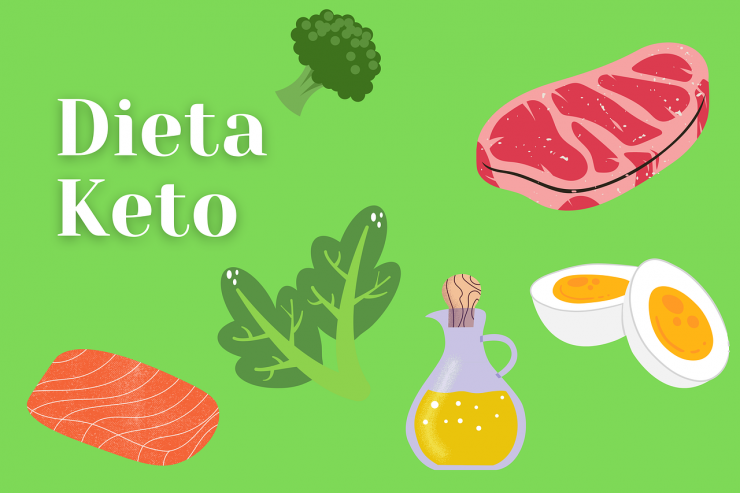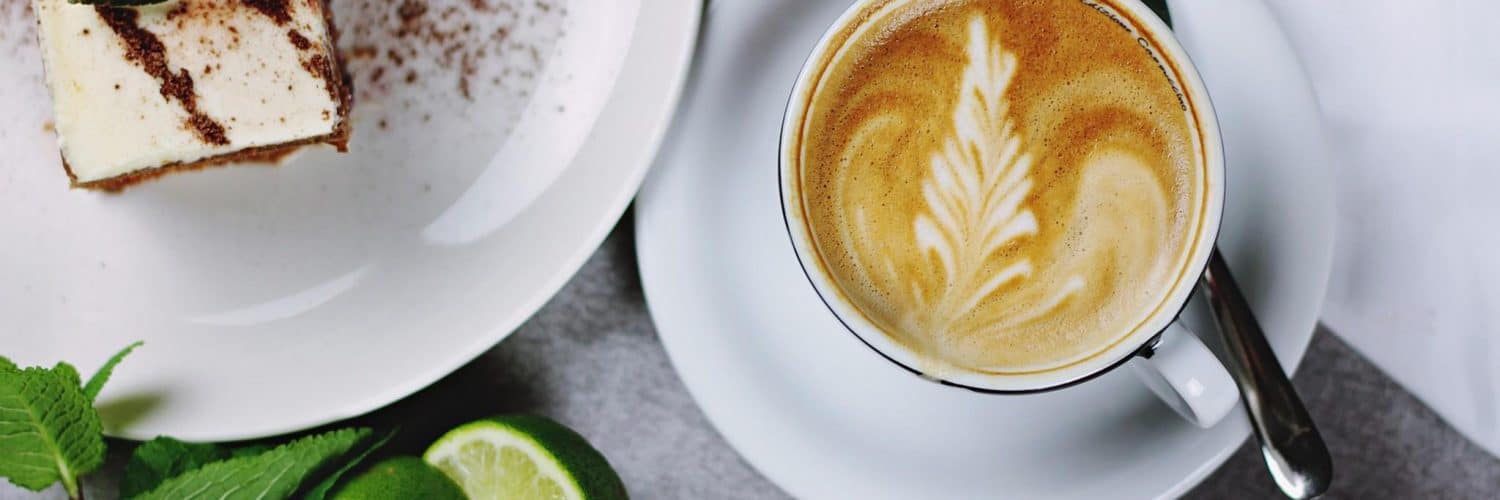The ketogenic diet, commonly known as the keto diet, is a very high-fat, low-carb diet that comes with several health benefits. This diet is often recommended to people who want to increase healthy eating and lose weight.
The ketogenic diet for beginners may also benefit from epilepsy and other health conditions. In this article, we will give a complete guide to beginners who want to start with the ketogenic diet.
What is a ketogenic diet?
The ketogenic diet is a high-fat and low-carb eating plan that is somewhat similar to other diets (low carb).
This drastically helps in reducing the carbohydrate intake and swapping it with fat. Consequently, this reduction in carb intake settles your body into the metabolic state of ketosis.
This low carb and high-fat eating plan can be a little difficult, to begin with as it makes a radial parting from the way you are currently eating.
Accordingly, when you incorporate this eating plan, you are also putting your body in a ketosis state. Hence, your carb-burning body evolves into a fat-burning one. This swap may result in weight loss and influence other health conditions.
When all this starts happening in your body, it shows exceptional efficiency of burning fat and converting it into energy. It again changes fat into ketones that can supply power to the brain.
Besides, a ketogenic eating plan can reduce blood pressure and transform the metabolism into ketones and fat away from carbs.
What is Ketosis?
Ketosis is the metabolic state of the body. In such a state, the body manipulates fat for energy instead of using carbs. It usually appears when you reduce the consumption of carbs and limit the sugar supply of your body. Note that glucose is the primary source of fuel for the cells.
Following this type of diet, one can effectively enter ketosis. In this diet, you need to consume protein in moderation as protein can also convert into glucose. As a result, the higher amount of protein consumption may slow down your shift to ketosis.
Hence, you must consume carbs in a small quantity of 20 to 50 grams each day. Plus, fill up with fat contents like eggs, fish, meats, nuts, healthy oils and so on.
You may also practice the age-old intermittent fasting procedure to enter ketosis. Remember, there are several forms of intermittent fasting. But, the most common way is to limit your food intake to roughly 8 hours each day and fast for the rest of 16 hours.
There are blood, breath and urine tests to help you determine whether you have been successful in attaining ketosis or not. This is simply possible by measuring the ketones generated by your body.
Other than that, certain symptoms like increased thirst, frequent urination, decreased appetite or hunger, dry mouth, etc., indicate attainment of ketosis.
Types of Ketogenic Diet
Well, you may think the keto diet is monotonous and doesn’t come with a variation. In reality, ketogenic diets are available in several versions, and it is up to the needs of your body which version will be more suitable for you.
- Standard Ketogenic Diet (SKD)
The standard ketogenic diet or SKD is a diet consisting of high fat, moderate protein and extremely low carbs. Generally, it contains about 20% protein, 70% of fat, and just 10% carbs.
- Cyclical Ketogenic Diet (CKD)
Cyclical Ketogenic Diet or CKD involves a span of higher carbs refeeding process. For instance, if you follow a ketogenic diet for 5 days, you will have to follow up with higher carbs for 2 days strictly.
- Targeted Ketogenic Diet (TKD)
Targeted Ketogenic Diet is the only keto diet that allows to combine carbs but around workouts. Cyclical or Targeted Ketogenic diets are indeed a more advanced diet plan that is primarily recommended to athletes or bodybuilders.
- High Protein Ketogenic Diet
This keto diet plan is quite similar to the typical ketogenic diet. However, here the quantity of protein is exceedingly higher.
The proportion of a High-protein ketogenic diet is usually 60% fat content, 35% protein and only 5% carbs. Nonetheless, both these standard ketogenic diets have been extensively researched.
In this article, the information is applicable mostly on the Normal Ketogenic Diet or the SKD. This is a conscious effort to help you understand the Ketogenic diet for beginners in detail. Also, this version of the ketogenic diet is the most popular and recommended one.
How Does The Ketogenic Diet Help epilepsy?
So, how does The Ketogenic Diet Help epilepsy? Now that you know, the ketogenic diet helps attain the metabolic state of ketosis, which helps to change using carbs for fuel to fat. This diet plan was in use for many years in the boundaries of hospitals to provide therapeutic nutrition. Presently, it is back in as a trendsetting diet plan in America.
The ketogenic diet or the keto diet originated from the 1920s where it was mostly used to cure childhood epilepsy. After its remarkable rate of success, people on the keto diet experienced around 30 to 40 percent fewer seizures. Yes, many studies support that this diet can significantly reduce seizures in children with epilepsy.
Foods to Eat and Avoid When On the Ketogenic Diet
When beginning to follow a ketogenic eating plan, you need to limit your carbs intake drastically. It is ideal to consume around 20 to 30 grams of carbs every day to kickstart the ketogenic diet for beginners. Plus, you need to make sure that you are well aware of the nutrient content of the food you eat.
Know what food items have mostly fat, proteins and carbohydrates as this will work in your favor of choosing the right food. Suppose you only avoid or take bread, chips, pasta, cookies, candies and ice cream, thinking that they contain carbs. On the other hand, you binge on beans, not knowing that they not only contain proteins but are high in carbs. Similarly, most fruits and vegetables contain carbohydrates.
The only item that doesn’t have carbs in them is meat which is rich in protein. Along with this, pure fats, including butter, olive oil, coconut oil, etc., are great for keto meals.
Foods To Avoid
You need to avoid or limit the intake of any food item that has higher carb content. Below is a list of such foods that you must eliminate or at least reduce when on the ketogenic diet.
- Grains and starches: Wheat-based items, cereals, rice, pasta, etc.
- Sugary Items: Cake, candy, smoothies, fruit juice, ice cream, soda, etc.
- Legumes and beans: Kidney beans, peas, chickpeas, lentils, etc.
- Fruits: Almost all fruits, excluding berries like strawberries
- Root Vegetables: Potatoes, carrots, sweet potatoes, etc.
- Diet or Low Fat Items: Salad dressings as well as some condiments like honey mustard sauce, ketchup, teriyaki sauce, barbecue sauce, low-fat mayonnaise.
- Sugar-free Diet Items: sugar-free sweeteners, syrups, candies, puddings, desserts, and so on.
- Unhealthy Fats: Mayonnaise, vegetable oils (processed), etc.
- Alcohol: Liquor, wine, beer as well as mixed drinks
Foods To Eat
The Ketogenic Diet for Beginners consists of food items majorly based on high protein and fat. Moreover, it is best to keep the base of your meals on whole or one ingredient food item.
- Meat: Chicken, pork, turkey, red meat, ham, steak, bacon and sausage
- Fatty Fish: Salmon, tuna, trout and mackerel.
- Eggs: Pastured or whole eggs.
- Cream and Butter: Full thick cream and butter (grass-fed).
- Cheese: Unprocessed cheeses including mozzarella, goat, cheddar, blue, etc.
- Seeds and Nuts: Walnuts, flaxseeds, almonds, pumpkin seeds, chia seeds, and so on.
- Healthy Oils: Avocado oil, olive oil (extra virgin).
- Avocados: Whole avocados, guacamole (freshly-made).
- Low Carbs Vegetables: Leafy vegetables, onions, tomatoes, peppers, etc.
- Condiments: Spices, herbs, salt and pepper.
Sample Ketogenic Eating Plan for A Week
Easy keto meal plan: Here is an easy keto meal plan that you can use to begin your keto journey.
Day 1. Monday
Breakfast: Egg muffins, grilled tomatoes and vegetables
Lunch: Chicken Salad with olives, feta cheese and olive oil dressing. Also, add a side salad dish. Dinner: Grilled salmon or tuna salad with side asparagus simmered in butter
Day 2. Tuesday
Breakfast: 2 whole eggs, sliced tomatoes, spinach omelet and basil
Lunch: Roasted meat with veggies Dinner: Cheese tacos and salsa
Day 3. Wednesday
Breakfast: milk and chia pudding, coconut and blackberries.
Lunch: Avocados and shrimp salad
Dinner: pork chops with broccoli, parmesan cheese and salad
Day 4. Thursday
Breakfast: Omelets, avocado toast, salsa, onions, peppers and spices
Lunch: Guacamole, salsa, celery sticks and 8 to 10 nuts
Dinner: Chicken with pesto and cream cheese stuffing and grilled zucchini
Day 5. Friday
Breakfast: Non-flavored Greek, whole milk yogurt, berries and nuts Lunch: Beef or pork lettuce wrap and seasoned bell peppers
Dinner: Sautéed mixed vegetables and tofu
Day 6. Saturday
Breakfast: Pancakes topped with cream cheese, blueberries and grilled mushrooms on the side
Lunch: Zucchini and beetroot noodles salad
Dinner: Mackerel stewed in olive oil and a side of kale and roasted pine nuts
Day 7. Sunday
Breakfast: Poached eggs and mushrooms
Lunch: low-carb sesame chicken with broccoli
Dinner: spaghetti squash Bolognese
Note that you should keep on rotating the meat and vegetables over a long period as they provide various nutrients to the body.
Healthy Ketogenic Snacks
Best Quick Keto Snacks: When you are a little hungry between the two meals, you can binge on some healthy yet tasty ketogenic-approved snack items.
- A handful of nuts
- Olives
- One to two eggs
- Keto sushi
- Cheese
- Full-fat Greek yogurt with berries
- Celery and salsa
- A small quantity of leftover food
- Dark Chocolate of 90%
Ketogenic Tips and Tricks to Start
Though it is quite challenging to stick to the diet, you can overcome this hurdle with a few tips and tricks.
- First of all, familiarize with the food labels to check the amount of protein, fat and carbohydrates
- Plan your meals beforehand
- Go through eco-friendly recipes available online and offline to make your menu
- Know about the healthy frozen ketogenic meals available in the market to prepare on the go when you are short of time
- Carry your keto meal while paying a visit to friends and family to curb your cravings
Bottom Line
The ketogenic diet is one of the best meal plans to reduce weight and improve health conditions. It may seem to be tough if you are a beginner, but once you understand the trick to manage and control your cravings, you will be on a roll.
So, have patience and follow this trending meal plan to get the most benefits out of it.













Add comment